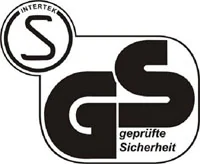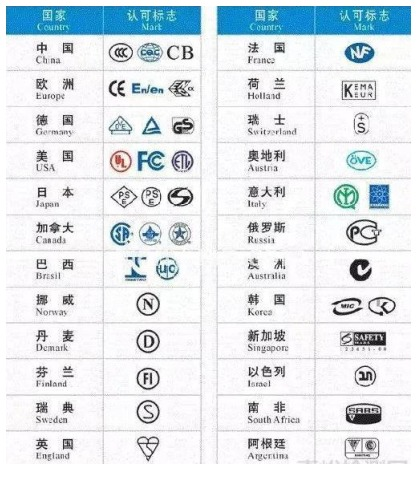Industrial PCs in China generally require 3C certification, CE certification, and CQC certification. The most basic is the 3C certification, which is China’s mandatory electrical and electronic standards. Different countries require different certifications for Industrial PCs, with different standards. The following 14 certificates, marks, terms of explanations for your clarify.
Certificates:
1. CE
Effective Regions: the European Union, the European Free Trade Association (EFTA), and Turkey.

On commercial products, the letters CE mean that the manufacturer or importer affirms the good’s conformity with European health, safety, and environmental protection standards. It is not a quality indicator or a certification mark. The CE marking is required for goods sold in the European Economic Area (EEA) but is also found on products sold elsewhere that have been manufactured to EEA standards.
The CE mark indicates that the product may be sold freely in any part of the European Economic Area, regardless of its country of origin. It consists of the CE logo and, if applicable, the four-digit identification number of the notified body involved in the conformity assessment procedure. “CE” is the abbreviation of “conformité européenne” (French for “European conformity”).
2. EN: RoHS
Effective Regions: the European Union. (China Order No. 39, Japan, South Korea, Turkey, Ireland, Sweden with different standards.

European Standards (abbreviated EN, from the German name Europäische Norm (“European Norm”)) are technical standards which have been ratified by one of the three European standards organizations: European Committee for Standardization (CEN), European Committee for Electrotechnical Standardization (CENELEC), or European Telecommunications Standards Institute (ETSI). All ENs are designed and created by all interested parties through a transparent, open, and consensual process.
The Restriction of Hazardous Substances Directive 2002/95/EC (RoHS 1), short for Directive on the restriction of the use of certain hazardous substances in electrical and electronic equipment, was adopted in February 2003 by the European Union.
The RoHS 1 directive took effect on 1 July 2006, and is required to be enforced and became law in each member state. This directive restricts (with exceptions) the use of ten hazardous materials in the manufacture of various types of electronic and electrical equipment. It is closely linked with the Waste Electrical and Electronic Equipment Directive (WEEE) 2002/96/EC (now superseded) which sets collection, recycling, and recovery targets for electrical goods and is part of a legislative initiative to solve the problem of huge amounts of toxic electronic waste. It refers to the EU standard unless otherwise qualified.
3. FCC
Effective Regions: the United States

The Federal Communications Commission (FCC) is an independent agency of the United States government that regulates communications by radio, television, wire, satellite, and cable across the United States. The FCC maintains jurisdiction over the areas of broadband access, fair competition, radio frequency use, media responsibility, public safety, and homeland security.
The FCC was formed by the Communications Act of 1934 to replace the radio regulation functions of the Federal Radio Commission. The FCC took over wire communication regulation from the Interstate Commerce Commission. The FCC’s mandated jurisdiction covers the 50 states, the District of Columbia, and the territories of the United States. The FCC also provides varied degrees of cooperation, oversight, and leadership for similar communications bodies in other countries of North America.
4. CCC (3C)
Effective Regions: China

The China Compulsory Certificate mark, commonly known as a CCC Mark, is a compulsory safety mark for many products imported, sold, or used in the Chinese market. It was implemented on May 1, 2002, and became fully effective on August 1, 2003.
It is the result of the integration of China’s two previous compulsory inspection systems, namely “CCIB” (Safety Mark, introduced in 1989 and required for products in 47 product categories) and “CCEE” (also known as “Great Wall” Mark, for electrical commodities in 7 product categories), into a single procedure.
Certification Companies or Organizations:
5. CQC
Effective Regions: China

The China Quality Certification Center (CQC, In Chinese 中国质量认证中心, Pinyin Zhōngguó Zhìliàng Rènzhèng Zhōngxīn) is a Chinese administration based in Beijing with responsibilities for the implementation of product certification. It is responsible for product standards and quality standards sold on the Chinese market.
6. TÜV
Effective Regions: The TüV mark is a safety certification mark customized by German TüV for component products and is widely recognized worldwide. In the process of complete machine certification, all components that have obtained the TüV mark are exempt from inspection.

TÜVs (German pronunciation: [ˈtʏf]; short for German: Technischer Überwachungsverein, English: Technical Inspection Association) are internationally active, independent service companies from Germany and Austria that test, inspect and certify technical systems, facilities and objects of all kinds in order to minimize hazards and prevent damages. The TÜV companies are organized in the three large holdings TÜV Nord, TÜV Rheinland and TÜV SÜD (with TÜV Hessen) as well as the smaller independent TÜV Thüringen, TÜV Saarland and TÜV Austria.
In 2008, TÜV SÜD and TÜV Rheinland agreed to merge which would have created the second-largest testing services company in the world, behind SGS S.A.; the combined company would have had around 25,000 employees and 2.2 billion euros in income.
7. UL
Effective Regions: More than 70% become American national standards, and UL is also the development agency of Canadian national standards

UL, LLC is a global safety certification company headquartered in Northbrook, Illinois. It maintains offices in 46 countries. Established in 1894 as the Underwriters’ Electrical Bureau (a bureau of the National Board of Fire Underwriters), it was known throughout the 20th century as Underwriters Laboratories and participated in the safety analysis of many of that century’s new technologies.
UL is one of several companies approved to perform safety testing by the U.S. federal agency, the Occupational Safety and Health Administration (OSHA). OSHA maintains a list of approved testing laboratories, which are known as Nationally Recognized Testing Laboratories.
8. GS
Effective Regions: European Countries

The meaning of GS is German “GeprufteSicherheit” (safety has been certified), and it also means “GermanySafety” (German safety). GS certification is a voluntary certification based on the German Product Safety Law (SGS) and tested in accordanceGS means “Geprüfte Sicherheit” in German (safety has been certified), and it also means “Germany Safety”. GS certification is a voluntary certification based on the German Product Safety Law (GPGS) and tested in accordance with the European Union standard EN or the German industrial standard DIN. It is a recognized German safety certification mark in the European market.
The GS mark is a safety certification mark issued by TUV, VDE, and other institutions authorized by the German Ministry of Labor.
The GS mark is a safety mark accepted by European customers. Generally, GS-certified products are sold at a higher unit price and are more popular.
9. ETL
Effective Regions: the United States, and Canada

ETL is the abbreviation of American Electronic Testing Laboratories (ElectricalTestingLaboratories). The ETL laboratory was founded by American inventor Edison in 1896 and enjoys a high reputation in the United States and the world. Like UL and CSA, ETL can test and issue ETL certification marks in accordance with UL standards or American national standards, and can also issue composite certification marks in accordance with UL standards or American national standards and CSA standards or Canadian standards at the same time. The “us” in the lower-right indicates that it is applicable to the United States, the “c” in the lower-left indicates that it is applicable to Canada. “us” and “c” are applicable to both countries. Any electrical, mechanical, and electromechanical products can be tested by EMC to test product performance. As long as the product has the CTL mark affixed, it means that the product has passed the ETL test. Passing ETL means conforming to relevant industry standards.
10. CB
Effective Regions: A total of 66 certification members in 51 countries and more than 270 CB laboratories under their jurisdiction have participated in this mutual appointment system

The CB system (IEC system for conformity testing and certification of electrical products) is an international system operated by IECEE. The certification members of IECEE test the safety performance of electrical products on the basis of IEC standards. The test results are the CB test report and the CB test certificate, mutually recognized by the member states of IECEE. The purpose is to reduce international trade barriers, due to meet the certification or approval criteria of different countries. IECEE is the abbreviation of the International Electrotechnical Commission (standard) for Electrical Equipment.
11. PCT
Effective Regions: Russia

“Products that want to enter the customs territory of the Russian Federation must obtain the National Standards Qualification Certificate (GOST Certificate) issued by the Russian National Standards and Metrology Commission”, the law in Russia stipulates this. Therefore, to enter the Russian market, you must obtain this certification. Only having the Russian PCT standard certification from China, which is equivalent to getting a pass to enter and exit Russia. (Note: Nothing is 100%, and sometimes impossible, even those with a certificate)
12. PSE
Effective Regions: Japan

PSE certification is a Japanese product safety mark. Japan’s DENTORL Law (Electrical Device and Material Control Law) stipulates that 498 products must pass safety certification when entering the Japanese market. In addition, PSE is also short for packet switching equipment and porto-systemic encephalopathy.
13. CSA
Effective Regions: the United States, and Canada

CSA is the abbreviation of the Canadian Standards Association. It was established in 1919 and is Canada’s first non-profit organization dedicated to the development of industrial standards. Electronics, electrical appliances, sanitary ware, gas, and other products sold in the North American market need to obtain safety certification. CSA is the largest safety certification member in Canada and one of the most famous safety certification members in the world. It can provide safety certification for all types of products in machinery, building materials, electrical appliances, computer equipment, office equipment, environmental protection, medical fire safety, sports, and entertainment. CSA has provided certification services for thousands of manufacturers all over the world, and hundreds of millions of products with the CSA mark are sold in the North American market every year.
14. NF
Effective Regions: France

NF is the code name of the French standard, which was implemented in 1938, and its governing body is the French Association for Standardization (AFNOR). The French Association for Standardization (AFNOR) is a non-profit organization established in 1926 in accordance with the French decree of 1901, recognized and funded by the government. The association is the core of the French standardization system. The NF service certification is a voluntary NF mark certification that confirms that the quality and reliability meet the quality performance specified by French, European, and international standards. It involves moving sites, furniture storage units, travel agencies, emergency repairs and towing, Passenger transportation, personal safety, lifelong education. The tourism service standards established by France are more famous, including reception, hotels, transportation, and satisfaction surveys.


Categories:
- Accessories44 products
- Camera11 product
- Stainless Steel Keyboard11 product
- VESA Brackets22 products
- Customized Devices3131 products
- Customized Android Touch Tablets77 products
- Customized Touch Monitors33 products
- Customized Touch PCs1111 products
- NFC/RFID/Camera Panel PC1111 products
- Industrial Box PC2424 products
- 4U BOX PC11 product
- Industrial Box/Mini PC2222 products
- IP65 IP67 Waterproof BOX PC11 product
- Industrial PC8888 products
- Weighing Device Panel PC22 products
- 1000nits Panel PC for Kiosk1212 products
- 3mm Bezel Touch PC2020 products
- Android Touch Tablet PC1010 products
- HMI 2nd Industrial Panel PC77 products
- HMI Industrial Panel PC99 products
- IP65/IP67 Waterproof PC2121 products
- Open Frame Touch PC22 products
- Rugged Tablet & Laptop77 products
- Stainless Steel Series2525 products
- Stainless Steel Touch Monitor99 products
- Stainless Steel Touch PC1313 products
- Stainless Steel Android PC33 products
- Touch Screen Monitors112112 products
- 1000nits Monitor for Kiosk1919 products
- 1000nits Monitor for Marine1414 products
- 3mm Bezel Touch Monitor2020 products
- HMI High-end Touch Monitor1414 products
- HMI PLC LCD Monitor11 product
- IP65/IP67 1000nits Monitor3636 products
- Open Frame Touch Monitor1414 products

